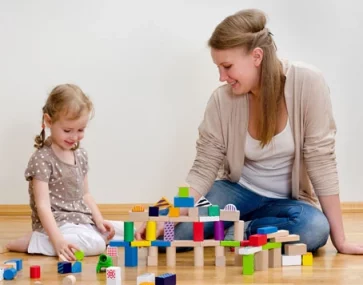Many of the developmental differences seen in premature infants are already apparent before they are discharged from a hospital. These differences can also be seen in their bodies when they are stillborn.
What are the Apparent Signs of Premature or Preterm Babies?
- A premature baby is one born before 37 weeks of gestation
- Because babies’ neurological systems aren’t mature, they do not have the muscles necessary to maintain flexed posture against gravity
- In the arms and legs of a baby, flexor tone is developed by 36 to 37 weeks of gestation
- In contrast to a typical baby at term, premature babies have less flexor tone
A premature baby is more than a small baby, being born early can affect how a baby develops. Monitor your baby’s milestones using the corrected age if the baby was born prematurely. Your baby’s age is calculated by subtracting the number of weeks your baby was born early. Consider the following scenario:
- When a baby is born at 28 weeks (12 weeks early)
- When the current age is 6 months – 12 weeks i.e 3 months corrected age
Due to the immature neurological system, the babies born early are floppy. It is most likely that preterm babies will experience persistent hypotonia, which will affect their motor development.
While preterm babies develop flexion tone as they get closer to term, their flexor tone is typically less than that of full-term infants, even at term age. It is unclear whether premature babies develop normal tones or if abnormal ones persist throughout their lives.
A baby who is prematurely born or has to remain in the hospital for some other reason at birth is at risk for postural impairment. As the baby’s hips are turned out and limited opportunities for movement are created, muscle tightness may develop over time. Without addressing this issue, it will have an adverse effect on gross motor development and QUALITY of movement.
How will You Know if your one-month-old Baby isn’t Doing What They’re Supposed to Do?
Initially, some of the red flags may be missed in premature infants since they should’ve still been in utero. Prematurity affects their age until the age of 2. While it is concerning when red flags are evident continually, it is also important to remember that these red flags are just the beginning.
BACK:
- The arms are not tucked in towards the body and hang to the sides. More back arching (extension) than flexion
- Inability to move arms and legs
TUMMY :
- No attempt to lift the head to clear the nose, and no movement of the legs.
- Neither arms nor body is tucked in
Red Flags in two-month-old Baby
Two-month-olds are usually more asymmetrical and more extended than newborns. Unless a definitive diagnosis has been made, it is not the right time to diagnose.
Tummy:
- Raise their heads with a greater sense of control
- Weight is shifted to the hips and their pelvis is flatter on the floor
- As of now, they only have a midline on one side of their heads.
Back:
- Rotating the shoulder out has begun.
- Spinal rotation and weight shifting are aided by head-turning.
- Observe
Red Flags:
ON BACK:
- Excessive extension & no arm/leg movement
- Movements are jerky (lack of fluidity)
ON TUMMY:
- No lifting of the head to clear the nose. No moving of the legs.
- As compared to the feet, head weight is still excessive
Torticollis
- This is the muscle on the side of our neck. The neck is tilted to the right and the head is turned to the left.
- In some cases, infants hold on to the position they are placed in. When confined to containers (swings, rocking chairs, etc. ), they have reduced mobility.
- Torticollis may result from a lot of time spent on the back or in containers.
- Torticollis becomes evident in most children by the age of 6 months.
If early intervention is not implemented, it may lead to absent midline play and children learning their skills while the head is tilted. At 2 months of age, babies will have tilted heads, and at 3 months, their heads will develop midline, so we would like you to switch their sides and avoid keeping them in the same position for too long when they are awake
Flat Head/Plagiocephaly
The Flathead syndrome is often associated with a lot of time spent on the back! Approximately 45% of infants between 7-12 weeks of age have a positional skull deformity (flat head). Having a flat head is most commonly caused by the use of containers and anxiety related to tummy time!
Plagiocephaly –
There are times when little ones have flat heads. A variety of severity levels can be seen with this condition. Babies with flat heads are more likely to have torticollis.
Brachycephaly –
There are a variety of severity levels for a flat back of the head!
Scaphocephaly –
A flattened head can make the head more oval. This occurs when their head’s soft spot closes faster than expected. It will not round off on its own if that’s the reason, and it would require medical attention.
How Does Early Intervention Help Premature Babies?
While not all premature babies will require early intervention, premature babies are at risk for many conditions, which make them eligible for early intervention. Prematurity-related disorders such as IVH, and other conditions may cause developmental disabilities, mental or emotional issues, speech or feeding issues, and other concerns in premature babies.
What can Parents do to Help Prevent It?
- Frequently switch positions
- It is equally important to play on your back, side, and belly! Having infants lie on their backs for a long time is not recommended, but they do learn skills while lying on their back!
- Change up the position you use for tummy time
- It is vital that containers can turn both ways when using them.
- Play with your siblings while changing the direction of the child’s head in the crib and changing the side of the car seat.
- You can prevent flat heads by asking for professional help.
A pediatric therapist and helmet therapy are needed for babies already with one and that needs to be started at the earliest.
The early intervention therapist involves parents as part of the therapeutic process and teaches them how to provide some therapy themselves. Early intervention services typically include:
- Physical therapy
- Occupational therapy
- Speech therapy
- Family counseling
Early Intervention: Does it Work?
Premature babies have benefited greatly from early intervention. Mothers of preterm infants may benefit from early intervention therapy in reducing anxiety and depression and improving their efficacy as parents.
Fix a consultation with one of our early intervention therapists at Hope AMC.






